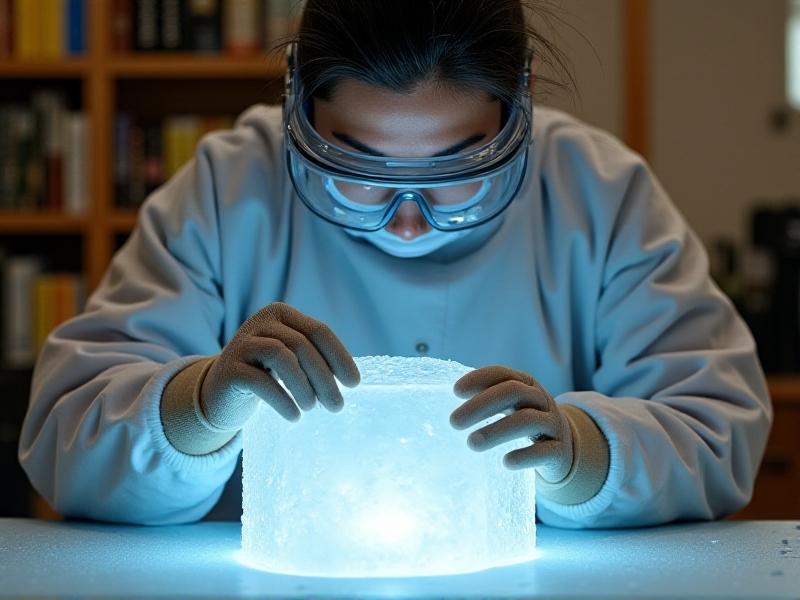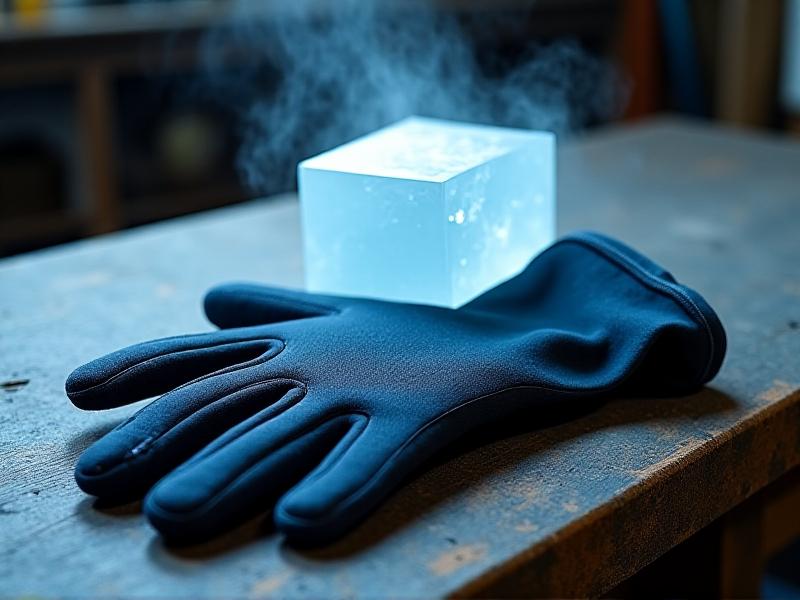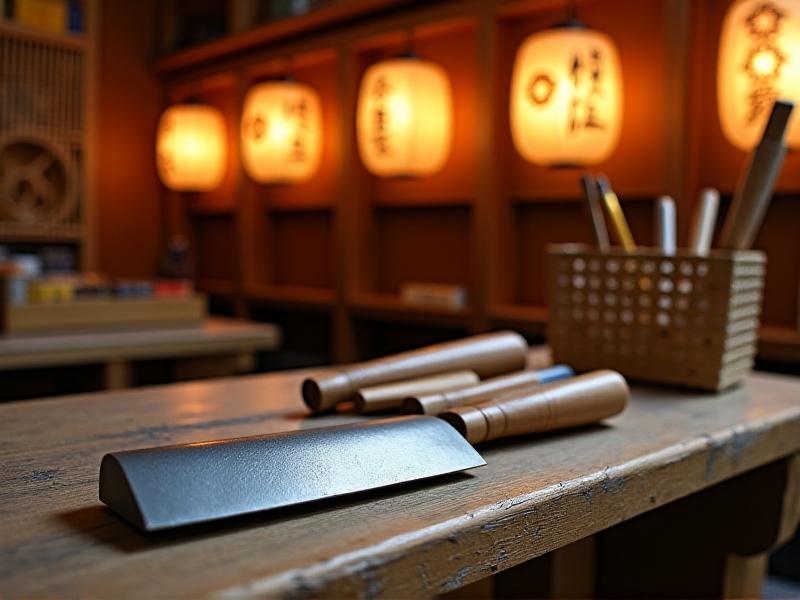Essential PPE for Dry Ice Sculpting Work
Introduction to Dry Ice Sculpting and the Need for PPE
Dry ice sculpting is a fascinating art form that combines creativity with scientific precision. Artists use solid carbon dioxide to create intricate designs, often for events, exhibitions, or educational purposes. However, working with dry ice presents unique challenges, primarily due to its extremely low temperature of -78.5°C (-109.3°F) and the potential release of carbon dioxide gas. Without proper precautions, these factors can pose serious health risks, including frostbite, respiratory issues, and skin irritation. This is where Personal Protective Equipment (PPE) becomes essential. PPE not only safeguards the artist but also ensures the process is safe and enjoyable. In this article, we’ll explore the essential PPE for dry ice sculpting, why it’s necessary, and how to use it effectively.

Insulated Gloves: Protecting Hands from Extreme Cold
One of the most critical pieces of PPE for dry ice sculpting is a pair of insulated gloves. Dry ice is incredibly cold, and direct contact with bare skin can cause frostbite within seconds. Insulated gloves act as a barrier, preventing the extreme cold from penetrating the skin. When selecting gloves, opt for those specifically designed for cryogenic work, as they are made from materials like neoprene or leather that can withstand low temperatures. It’s also important to ensure the gloves fit snugly but allow for dexterity, as sculpting requires precision. Additionally, gloves should be long enough to cover the wrists, providing extra protection. Remember, even with gloves, avoid prolonged contact with dry ice, and always handle it with care.

Safety Goggles: Shielding Eyes from Frost and Debris
Safety goggles are another indispensable component of PPE for dry ice sculpting. The sublimation process, where dry ice transitions from a solid to a gas, can create a foggy environment, potentially irritating the eyes. Moreover, small ice particles or debris can become airborne during sculpting, posing a risk of eye injury. Safety goggles provide a protective barrier, ensuring the eyes remain safe and comfortable. Look for goggles with anti-fog coatings to maintain clear vision, and ensure they fit securely to prevent any gaps. For added protection, consider goggles with side shields, which offer comprehensive coverage. Wearing safety goggles not only safeguards your vision but also allows you to focus on your artistic creation without distractions.

Protective Aprons and Clothing: Preventing Skin Exposure
When working with dry ice, it’s essential to protect your skin from accidental exposure. A protective apron made from a durable, insulated material can shield your torso and legs from cold burns. Additionally, wearing long-sleeved shirts and long pants made from thick fabrics like denim or canvas adds an extra layer of protection. Avoid loose-fitting clothing, as it can trap carbon dioxide gas or come into contact with the dry ice. Some artists also opt for lab coats or specialized cryogenic suits for maximum safety. Remember, the goal is to minimize skin exposure while maintaining comfort and mobility. By dressing appropriately, you can focus on your craft without worrying about potential hazards.
Respiratory Protection: Managing Carbon Dioxide Gas
Dry ice sublimates into carbon dioxide gas, which can accumulate in poorly ventilated spaces and pose a respiratory hazard. Inhaling high concentrations of CO2 can lead to dizziness, headaches, or even loss of consciousness. To mitigate this risk, it’s crucial to work in a well-ventilated area. However, in confined spaces, respiratory protection becomes necessary. A simple dust mask is insufficient; instead, use a respirator with a CO2 filter or a self-contained breathing apparatus (SCBA) for extended exposure. Regularly check the ventilation in your workspace and monitor CO2 levels using a gas detector. By prioritizing respiratory safety, you can ensure a healthier and more productive sculpting environment.
Footwear: Ensuring Stability and Protection
Proper footwear is often overlooked but is vital for dry ice sculpting. The workspace can become slippery due to condensation or ice particles, increasing the risk of falls. Wear sturdy, slip-resistant boots with thick soles to provide stability and insulation. Waterproof boots are particularly useful, as they prevent moisture from seeping in and causing discomfort. Additionally, ensure the boots cover your ankles for added protection. Avoid open-toed shoes or sandals, as they leave your feet vulnerable to cold burns. By choosing the right footwear, you can maintain your balance and focus on creating your masterpiece without unnecessary risks.
Workspace Setup: Enhancing Safety and Efficiency
Your workspace plays a significant role in ensuring safety during dry ice sculpting. Start by choosing a well-ventilated area, preferably with open windows or an exhaust fan to disperse carbon dioxide gas. Use a non-slip mat to prevent accidents and keep the floor dry. Organize your tools and materials within easy reach to minimize unnecessary movement. Consider using a heat-resistant surface for sculpting, as it can withstand the extreme cold of dry ice. Label containers clearly and store dry ice in insulated coolers when not in use. By setting up your workspace thoughtfully, you can create a safe and efficient environment that allows you to focus on your art.
First Aid and Emergency Preparedness
Despite taking precautions, accidents can still happen during dry ice sculpting. Being prepared with a well-stocked first aid kit and emergency procedures is essential. Include items like burn cream, bandages, and cold packs to treat minor injuries. Familiarize yourself with the symptoms of frostbite and CO2 poisoning, and know how to respond. Keep a fire extinguisher nearby, as dry ice can accelerate combustion in certain conditions. Additionally, have a phone or communication device within reach to call for help if needed. By prioritizing emergency preparedness, you can respond effectively to any situation and ensure the safety of yourself and others.
Conclusion: Prioritizing Safety in Dry Ice Sculpting
Dry ice sculpting is a unique and rewarding art form, but it comes with inherent risks that demand careful attention to safety. By equipping yourself with the right PPE—insulated gloves, safety goggles, protective clothing, respiratory protection, and sturdy footwear—you can minimize these risks and focus on your creative process. Additionally, setting up a well-organized workspace and being prepared for emergencies further enhances safety. Remember, safety is not just a precaution; it’s an integral part of the artistic journey. By prioritizing PPE and safety measures, you can enjoy the art of dry ice sculpting while protecting yourself and those around you.








